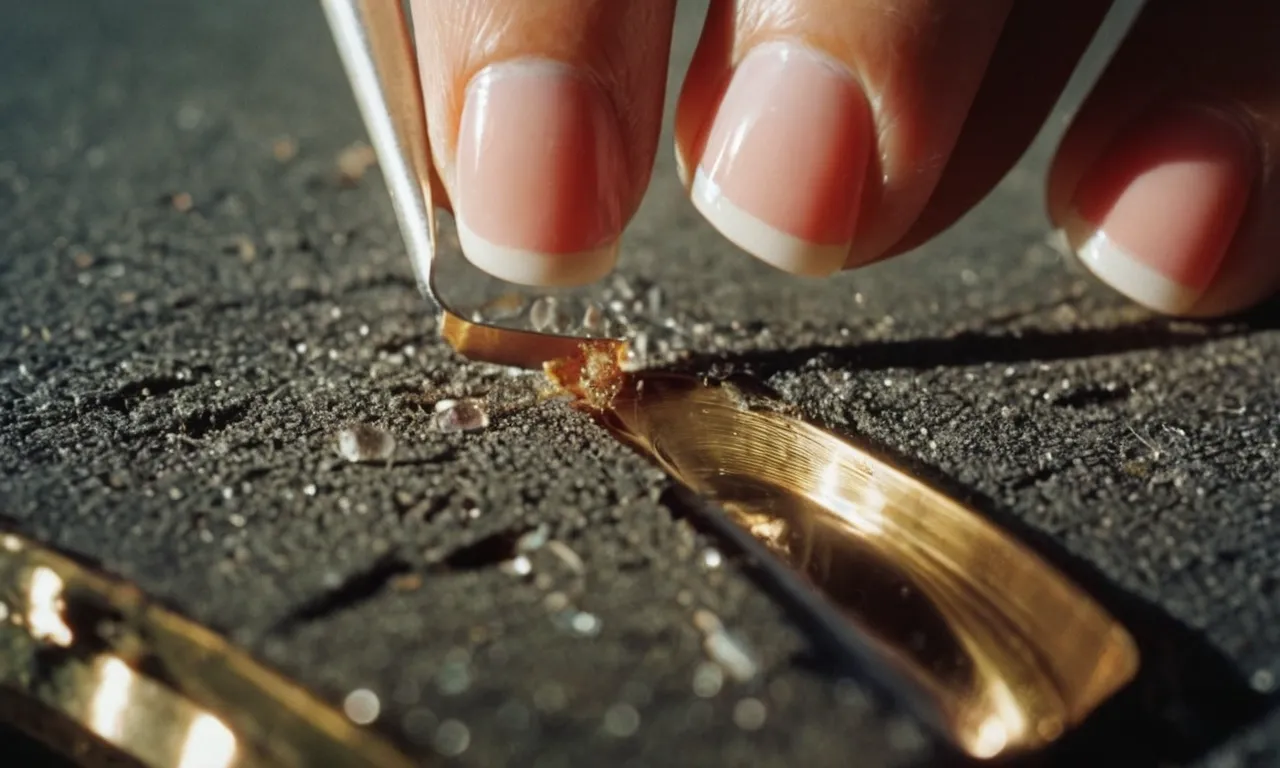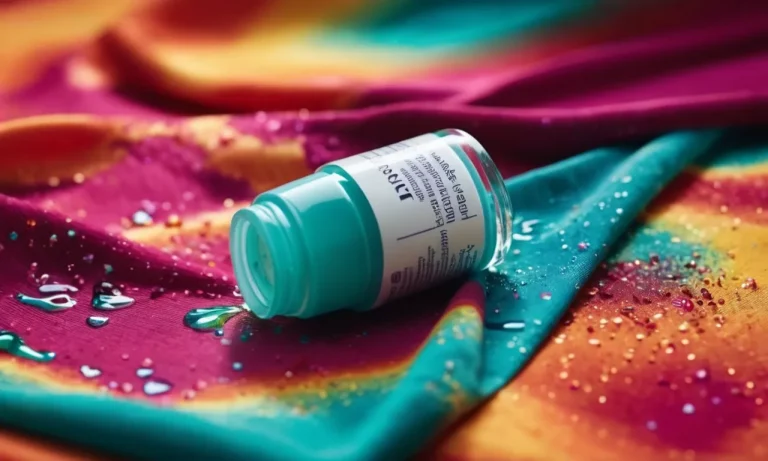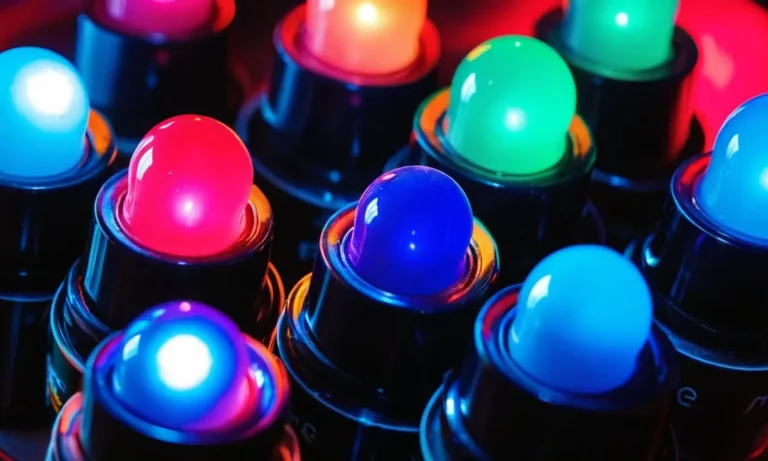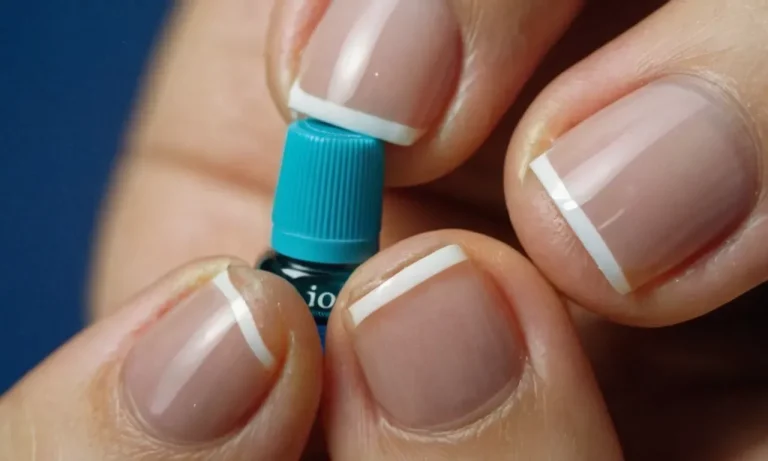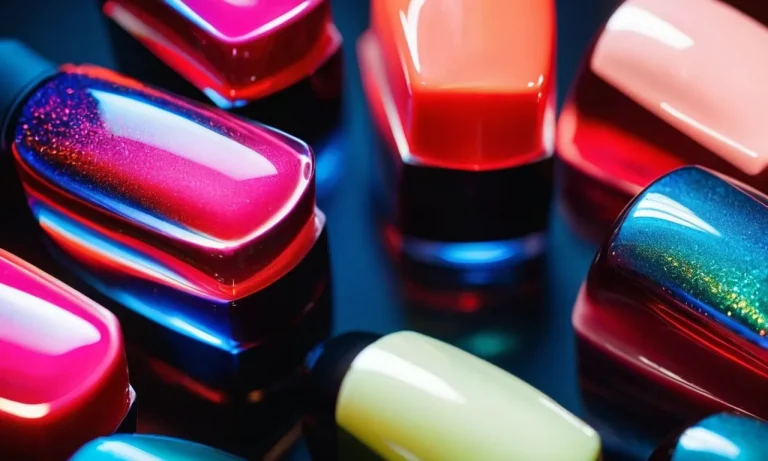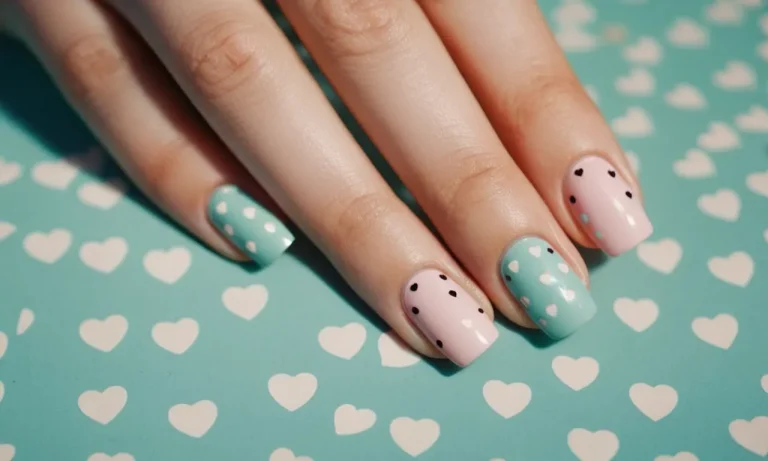Can Peroxide Damage Your Nails? A Comprehensive Guide
If you’ve ever had a minor nail injury or noticed discoloration, you may have reached for hydrogen peroxide. This common disinfectant can clean small wounds and whiten nails, leading some to use peroxide soaks as part of their beauty routine.
But can regularly using peroxide on your nails cause harm in the long run? In this comprehensive guide, we’ll take an in-depth look at the effects of hydrogen peroxide on nails and help you make an informed decision.
If you’re short on time, here’s a quick answer to your question: While occasional use of diluted hydrogen peroxide is fine for cleaning and whitening nails, overuse or prolonged soaking can lead to nail damage, discoloration, and increased chance of fungal infection.
How Peroxide Works on Nails
Kills germs and lifts stains
Hydrogen peroxide is an effective antiseptic that can kill bacteria, viruses, and fungi. When applied to nails, the bubbling action helps lift dirt, debris, and stains from underneath the nail plate and from nail folds. This helps clean and disinfect nails.
Using peroxide can be an easy at-home treatment to maintain clean nails.
Bleaches nail plate
The oxidizing nature of hydrogen peroxide leads to a bleaching effect on nails. Peroxide breaks down melanin pigments in the nail, lightening discolored or yellow nails. The bubbly oxygen molecules get under the nail and lift staining.
Peroxide nail soaks and whitening treatments are popular for lightening nails and removing stains.
Damages proteins over time
While peroxide can be useful for nail cleaning and whitening, overuse can damage nails. The oxidizing effect of peroxide can break down nail proteins such as keratin over time with repeated exposure. This leads to brittle, peeling nails.
Peroxide can also damage the nail bed and matrix if overused, leading to ridging or slowed nail growth.
It’s best to limit peroxide nail treatments to occasional use such as once per week. Applying nail protein treatments can help counteract the drying effects. Moisturizing oils support nail health. See a dermatologist if you experience severe brittleness, peeling or damage from peroxide use.
Benefits of Hydrogen Peroxide for Nails
Disinfects nail wounds
Hydrogen peroxide is an effective disinfectant that can help clean and prevent infection in minor cuts, scrapes or injuries around the nail bed. Its oxidizing action helps kill microbes that can cause infection.
Simply soak a cotton ball with 3% hydrogen peroxide and dab it on the nail wound once or twice a day until it heals. This helps keep the area clean and promotes faster healing. However, hydrogen peroxide should not be used on deep or serious wounds – those require medical treatment.
Whitens yellow nails
Hydrogen peroxide is a mild bleaching agent that can help whiten yellow, stained or discolored nails. It helps oxidize and break down pigments in the nail to lighten its appearance. An easy home remedy is to mix equal parts hydrogen peroxide and water in a bowl.
Soak nails for 10-15 minutes daily until you see results. Using higher concentrations like 10% solution can cause nail irritation, so dilute it appropriately. Hydrogen peroxide can also be combined with baking soda to make a scrub to gently buff away stains.
May treat nail fungus (limited research)
Some initial studies show hydrogen peroxide may have antifungal abilities to combat nail fungus (onychomycosis), due to its antiseptic properties. However, research is still limited on its efficacy. One study found applying 3% hydrogen peroxide once a day for 3 months helped
reduce nail fungus symptoms in 75% of people, compared to only 61% in those using standard antifungal treatment. However, more rigorous clinical studies are needed to make conclusive claims. Hydrogen peroxide is not currently an approved medical treatment for nail fungus.
Hydrogen peroxide is considered relatively safe and easy to use at home. However, misuse can cause nail irritation, redness or peeling. It should always be properly diluted and applied carefully around nails. Seek doctor’s advice before using it to treat any major nail conditions.
Risks of Overusing Peroxide on Nails
Using low concentrations of hydrogen peroxide on nails occasionally can have benefits. However, overusing peroxide repeatedly over time carries some risks that should be considered.
Can dry out nails
Frequent exposure to peroxide can strip nails of natural moisture and oils. This can lead to increased brittleness, dryness, and cracking. According to research from the National Institutes of Health, hydrogen peroxide is an oxidizing agent that can damage proteins and lipids that help keep nails hydrated.
May cause brittleness and peeling
In addition to drying effects, overusing peroxide can weaken nails, making them more prone to breaking, chipping, and peeling. The oxidation from peroxide can degrade keratin proteins in the nail plate over time. This structural damage leads to lackluster, fragile nails.
Accelerate nail discoloration
Frequent peroxide use can worsen staining and yellowing of nail beds. In some cases, over-bleaching can even cause white spots on nails. The American Academy of Dermatology cautions that nail discoloration from peroxide tends to be permanent and difficult to reverse.
Increase risk of fungal infection
While low concentrations of peroxide have antifungal properties, higher concentrations or overuse removes healthy oils that help protect nail beds from fungal invasion. Damage to the nail surface also makes it easier for fungi and mold to take hold. This table compares the risks:
| Low Peroxide Use | High or Frequent Use |
| Mild antifungal benefit | Increased infection risk |
| Minimal oil removal | Strips protective oils |
| Less oxidation damage | Cumulative oxidation effects |
How to Safely Use Peroxide on Nails
Dilute to low concentration (3% or less)
When using peroxide on your nails, it’s crucial to dilute it down to a low 3% concentration or less. Most drugstore peroxide bottles contain a 6% solution, which is too strong and can really damage the nail bed. Simply mix equal parts peroxide and water to cut the concentration in half.
This helps prevent overly drying out or bleaching the nails.
Limit soaking time (5 mins or less)
Don’t soak nails in peroxide for more than 5 minutes at a time. Any longer can cause nail weakness, peeling, cracking and discoloration. Set a timer so you don’t accidentally overdo it! Brief soaking is all you need to get nails clean and brightened up.
Rinse thoroughly after use
Be sure to rinse nails well with plain water after peroxide soaking. This removes any residual solution and prevents further oxidation after taking fingers out. Give those nails a good scrub under running water for 30 seconds on both sides.
Moisturize nails after soaking
Since peroxide can dry and dehydrate nails, it’s key to replenish moisture after use. Massage in a rich nail oil, cream or butter to hydrate. Shea butter and jojoba oil work great. Regular moisturizing helps keep nails flexible and prevents brittleness.
Avoid over-bleaching
While peroxide can gently brighten yellow nails, avoid over-bleaching. Whitening nails too aggressively can damage the nail bed. Use the lowest concentration and shortest time needed to lift stains. Give nails a break in between treatments. Moderation prevents excessive dryness and weakening.
Alternatives for Whitening & Disinfecting Nails
Lemons
Lemons are a natural alternative for whitening nails thanks to their acidic properties. The vitamin C and acids in lemons can help break down staining on nails and restore a brighter, whiter color. Simply rub a sliced lemon wedge over nails, letting the juice soak in for 5-10 minutes before rinsing.
For maximum brightening power, repeat this daily. Studies show citrus acids like those in lemons are gentle yet effective at removing discoloration without drying out nails.
Baking Soda
Baking soda is a gentle abrasive that can scrub away yellow stains on nails, leaving them cleaner and brighter. Create a thick paste by mixing baking soda with water or lemon juice, then massage onto nails using a soft brush or toothbrush.
Let sit briefly before rinsing – the baking soda will bubble away stubborn discoloration. Research indicates baking soda whitens through its mild exfoliating properties without weakening or drying nails like harsh bleaches. Its antiseptic properties also disinfect nails.
Whitening Toothpaste
Whitening toothpastes contain mild abrasives and bleaching ingredients like hydrogen peroxide that can also whiten yellow nails. Gently rub a pea-sized amount of whitening toothpaste over each nail using a soft-bristled toothbrush. Let sit 1-2 minutes before washing off.
The toothpaste will bubble away stains for brighter, cleaner nails. Studies demonstrate whitening toothpastes are gentler than store-bought bleaches yet lift discoloration effectively when used sparingly.
White Vinegar
White vinegar naturally disinfects and deodorizes nails while its acidic properties break down stubborn yellow stains. Create a solution by diluting 1 part vinegar with 2 parts warm water. Soak nails for 10-15 minutes, then scrub gently with a soft brush.
According to research, vinegar brightens nails and removes fungus and bacteria buildup through its antibacterial, antifungal acetic acid. As a bonus, its tangy scent evaporates quickly once rinsed.
Tea Tree Oil
Tea tree oil is a powerful natural antiseptic that disinfects nails, helping prevent fungal infections that cause yellowing. It also moisturizes dry, brittle nails. Mix 2-3 drops of tea tree oil into 1 teaspoon of olive oil or coconut oil. Use a cotton pad to apply the mixture onto nails and cuticles.
Let sit 5 minutes before rinsing – the tea tree oil will soak in to thoroughly clean and strengthen nails. Studies confirm tea tree oil’s antimicrobial properties kill nail fungus and prevent growth when applied regularly.
Conclusion
While peroxide can effectively clean and brighten nails when used properly, overuse comes with risks. To keep your nails looking healthy, opt for occasional peroxide soaks rather than daily whitening. And be sure to moisturize after bleaching to prevent drying and damage.
With some common sense precautions, you can safely reap the whitening benefits of hydrogen peroxide without putting your nails at risk.

